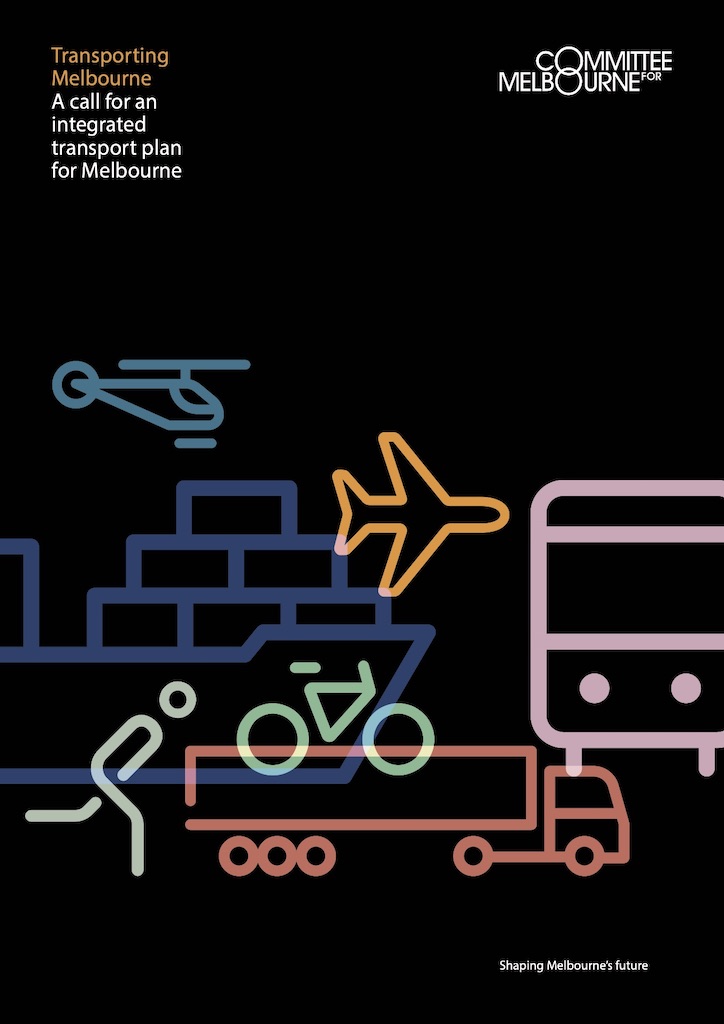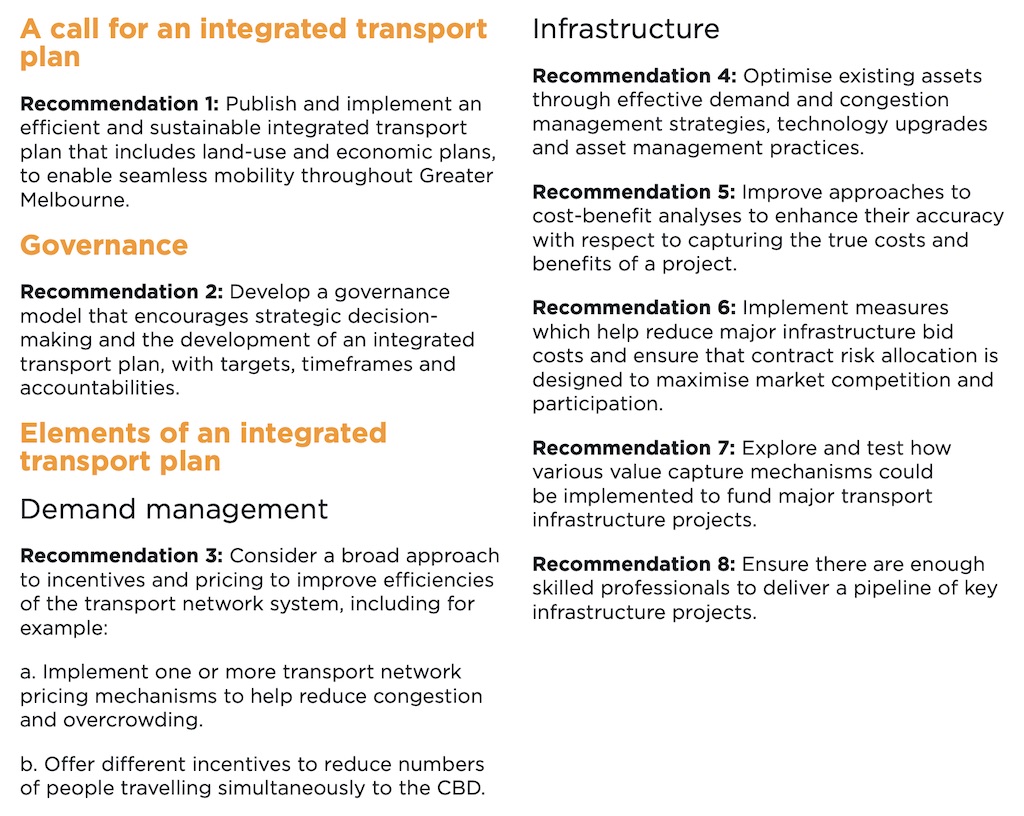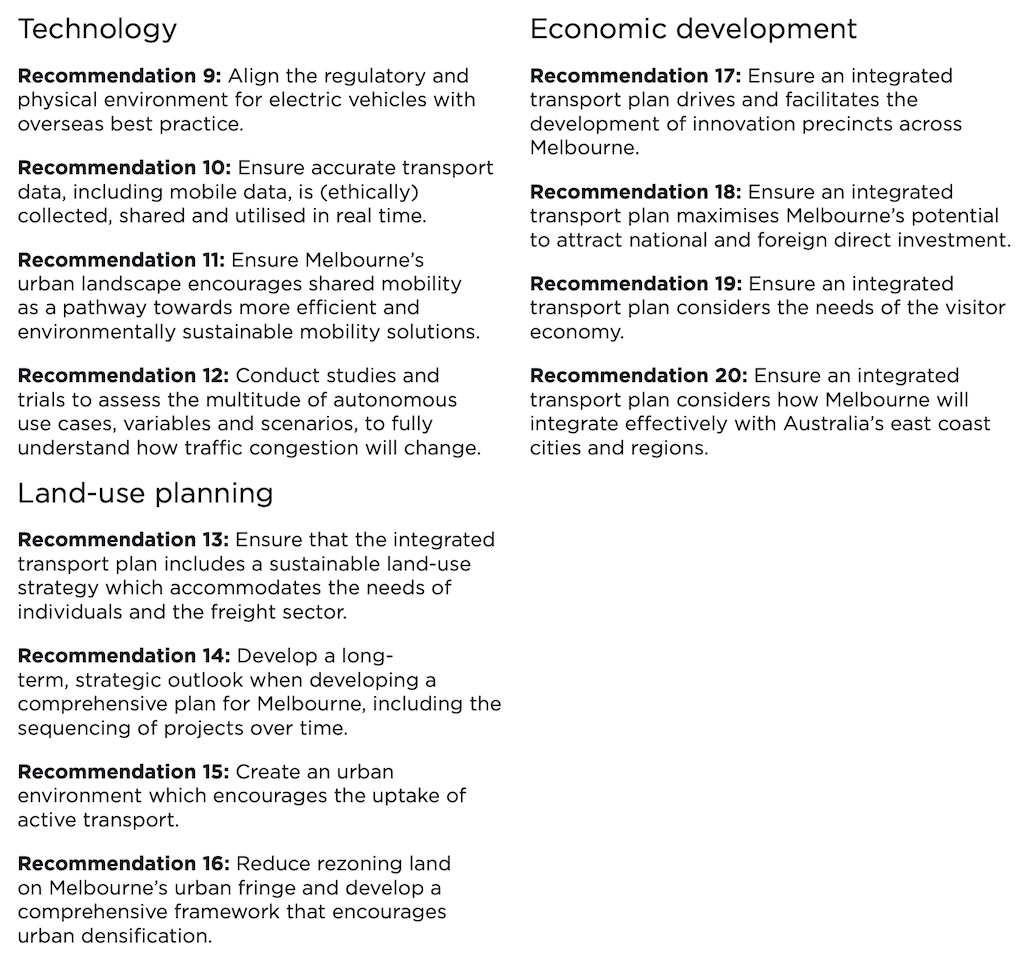The Committee for Melbourne released a report titled “Transporting Melbourne – A call for an integrated transport plan for Melbourne“.

We welcome and support the report. It’s a great contribution to the discussion. The report makes multiple statements that we support, including the quotes highlighted below.
Integrated transport and land-use planning
The development and publication of a comprehensive integrated transport plan, which incorporates transport, land-use and economic development planning, is essential for the future of Greater Melbourne.
As the economy recovers and we again welcome increasing numbers of new residents and visitors, we must ask ourselves what we must do for Greater Melbourne to remain highly liveable, prosperous and sustainable. Designing and implementing a comprehensive strategic plan, which combines transport, land-use and economic development planning, is a good place to start.
Economic development
There is a strong correlation between the quality of a city’s transport infrastructure and the level of economic development. Economic and social opportunities abound when highly- connected and efficient transport networks are in place. Markets become more accessible, as do employment opportunities.
Use pricing to reduce congestion
User pricing across the transport network, including for roads, public transport, and parking, could shift travel demand, helping reduce congestion, particularly during peak periods.
Support for active transport
Social distancing is likely to reduce the capacity of public transport, with bike paths and active transport options more sought after than before. The right infrastructure will need to be in place to meet these demands.
To cultivate more liveable neighbourhoods, improvements to local amenity will be needed, such as access to local social activities (cafes, restaurants) as well as better infrastructure for active transport.
There is an opportunity to remake civic life which will help the natural environment and improve peoples’ health, including initiatives to support cycling and active transport.
As Greater Melbourne’s key urban development precincts have become more dense, walking and cycling have become an important complement to traditional motorised forms of mass transport. However, with mobility restrictions enforced due to COVID-19, there has been an even greater uptake in active transport. An integrated transport plan for Melbourne should consider these developments and encourage more active forms of transport.
For individuals to embrace active transport, there must be a safe and accessible network of walking and micro-mobility paths, along with micro-mobility storage facilities located at stations and key employment precincts.
Responding to climate change
In addition, our reliance on private vehicles will exacerbate congestion and continue to have negative implications for the planet, with transport being Australia’s second largest source of greenhouse gas pollution. Melburnians should look no further than the images of devastation and destruction brought about by the recent national bushfire crisis to understand the importance of reducing our emissions and safeguarding our natural environment. To ensure sustainable urban development and to lower emissions, Melbourne must embrace alternative forms of transport and smart technology solutions for future transport.
In addition to reducing congestion on our transport network, active transport improves health outcomes for individuals and helps reduce greenhouse gas emissions. The Victorian Government and local governments should be implementing measures which encourage all forms of active transport.
Density
Melbourne requires a greater mix of housing across the city, which addresses housing diversity and affordability. Part of the solution will be to build high-density, mixed-use developments along existing transport corridors and to cultivate thriving activity centres outside of the CBD.
Recommendations in the report
We support the recommendations presented in the report:


Conclusion
We support the work of the Committee For Melbourne and encourage residents & ratepayers to support the recommendations made in the report.
Published on 1st August 2020
